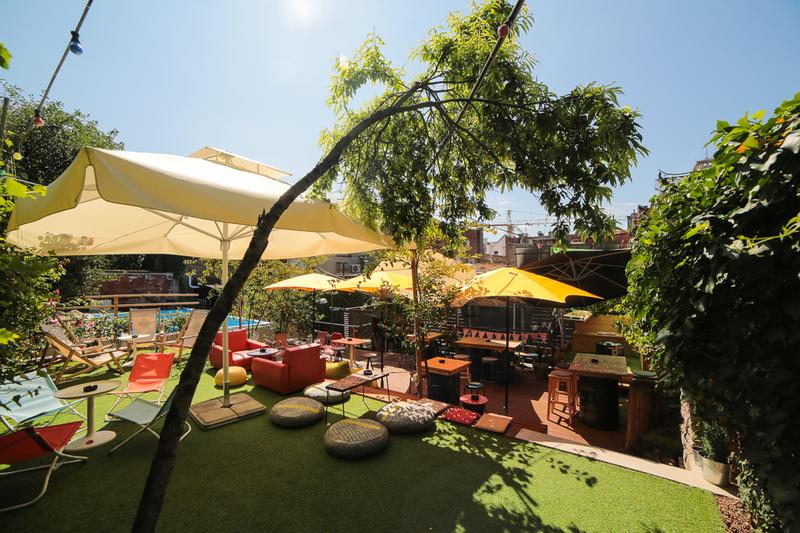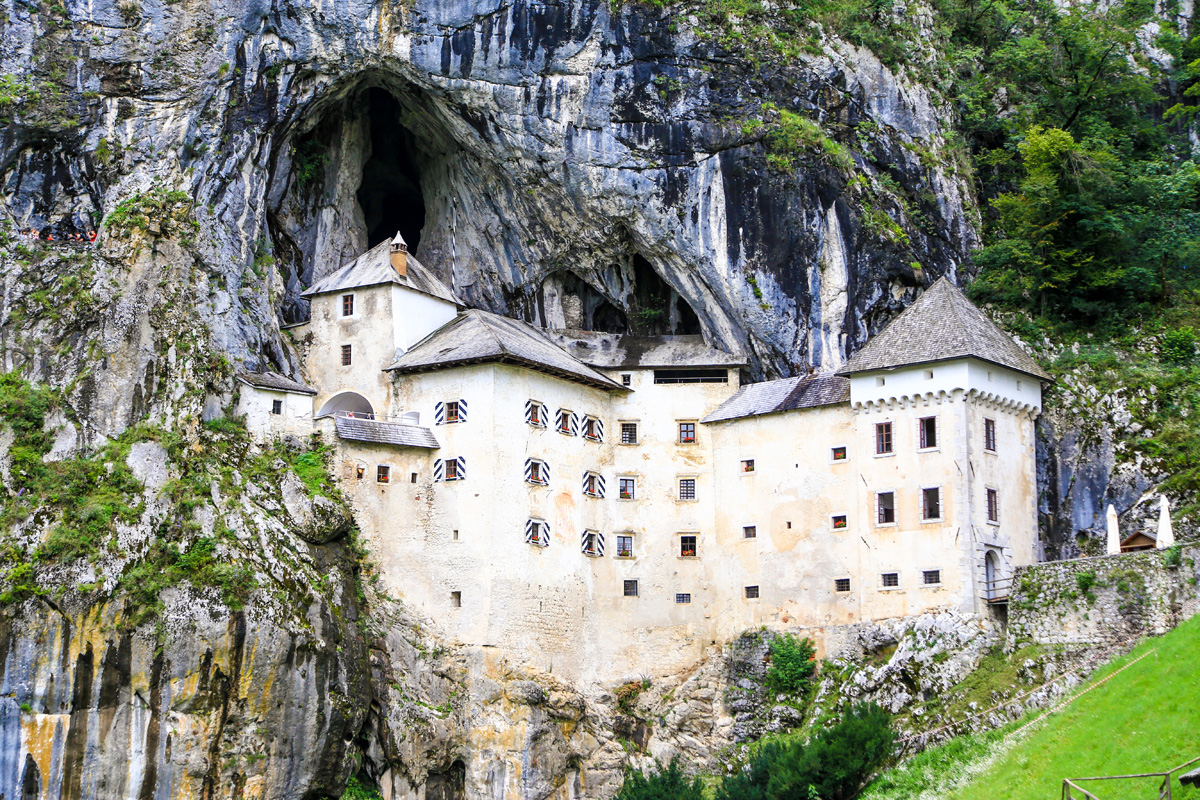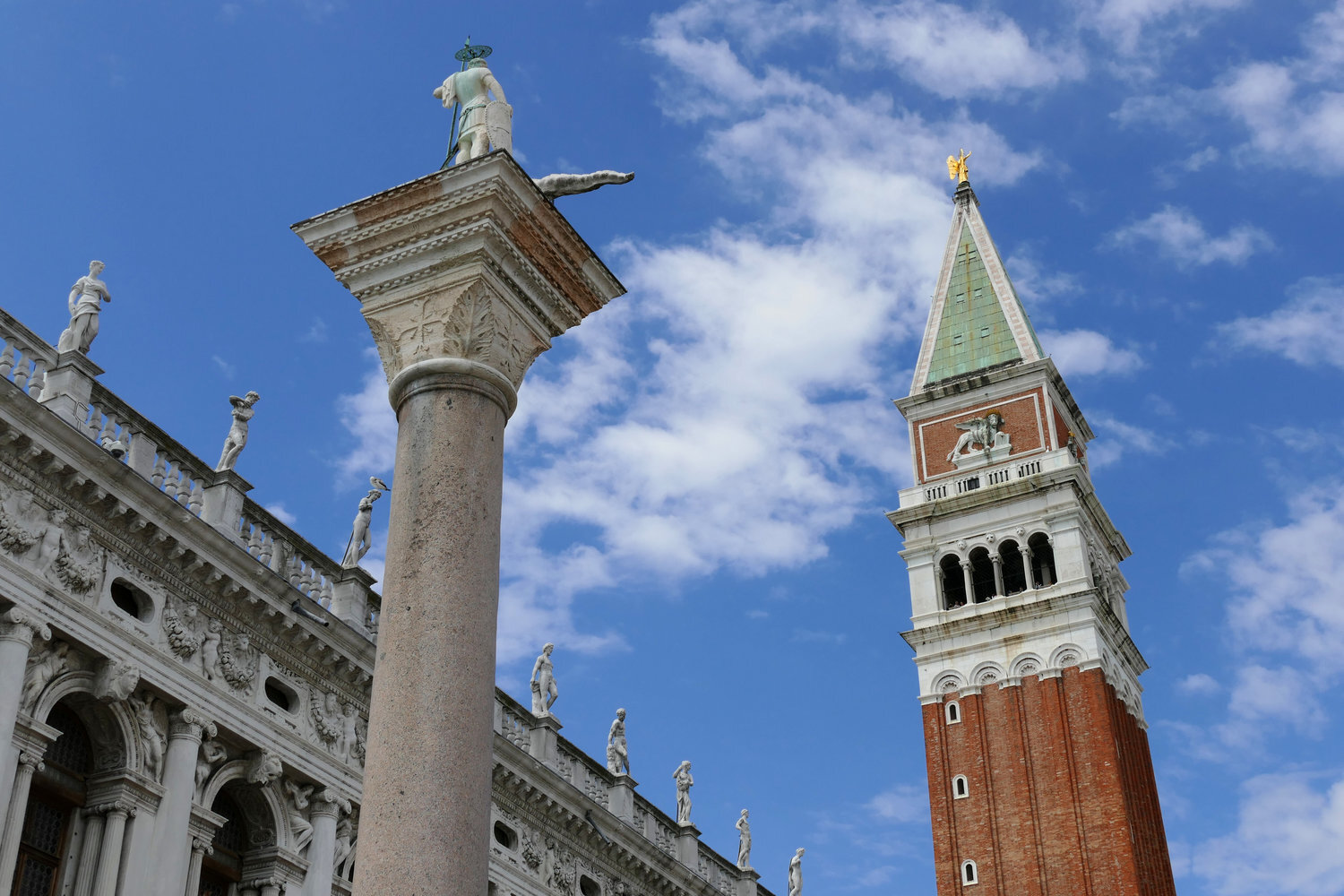Itinerary for Interrail ● 3 Weeks in Central Europe.
Central Europe is one of the best areas to consider for your first Interrail expedition. This itinerary encompasses diverse and vibrant cities, each one buzzing with life.
From the historic heartland of Berlin to the sun-soaked Balkans, through the Alpine Lakes of Slovenia, and colourful Baroque towns, your trip will round off with a visit to the iconic city of Venice.
📚 Resources.
💰 19-day itinerary from £650.00 per person.
Berlin ● 3 nights.
Once a city divided, Berlin has flourished in an unparalleled manner since the collapse of the Berlin Wall. Propelled by a fervent desire to embrace their re-discovered freedom, Berliners unified their city through a cultural and social revolution of its own creation.
An absolute must when in Berlin is to arrange a visit to the famous Reichstag Building. This iconic building was severely damaged in the wake of the Second World War, subsequently being fitted with a glass dome in the 90s during renovation work to re-vitalise the structure.
If possible, try and snag the late afternoon slot, as this will allow you to witness the sun setting over Berlin — a clear highlight of any visit. You must make sure that you register your details at least a day or two in advance. Admission is free, however, slots frequently fill-up.
The imposing elegance of the Brandenburg Gate (📷) has earned itself a reputation as arguably the defining symbol of modern-day Berlin. Whilst you can admire its intricate detail during the day, make sure to stroll here after dark to see the Gate at its most radiant.
💰 Dorms from £17.00 per night.
🎒 Side trips.
During the journey between Berlin and your next stop of Prague, spend time exploring along the way. These destinations are located on the train-line to the Bohemian capital.
Dresden.
The city of Dresden was left completely devastated and in ruins after World War II. With the city diminished to a shell of its former glory, Dresden had a long road to recovery.
The domed church of Frauenkirche was completely destroyed, and lay in ruin for 50 years before being re-constructed between 1994 and 2005. Setting eyes on this church alone is worth the detour.
Decin.
This relatively small town is home to less than 50,000 people, but it has a lot of history within its parameters. Between 1938 and 1945, the town was under control of Nazi Germany, resulting in the displacement of the local German population after liberation.
Today the history of this charming town is exemplified at the imposing Decin Castle, a 700 year old fort that conceals some lovely gardens.
Prague ● 3 nights.
One of Europe’s most stunning cities, Prague has captivated the imagination of tourists for as long as people have wandered its medieval cobblestone streets. Vibrant Bohemian buildings painted in a wide palette of colours evoke lucid dreams of real-life fairytales.
Simply strolling across the famous Charles Bridge is enough to achieve this feeling. Breathtaking views of Gothic monolith St. Vitus Cathedral dominate the skyline behind you as you traverse the bridge. The centrepiece of the city, Old Town Square (📷) still serves as a hive of activity, enticing people from far and wide with its regal opulence.
In Old Town Square, you will find the Astronomical Clock. At over 600 years old, this clocktower is fully functional, displaying an accurate location of the sun and moon.
At the opposite side of Charles Bridge, perched atop a steep hill in the west of the city, you will find the largest ancient castle in the world — Prague Castle (📷). Fortified inside the walls is the staggering St. Vitus Cathedral, an architectural masterpiece of Gothic design. Towering above the city, it has become as an enduring symbol of Czech culture.
Within the castle walls, countless hours can be spent exploring the grounds, even allowing for a quick sit-down drink or bite to eat at one of the on-site cafes.
From the foot of a steep hill, Nerudova winds upwards to the castle complex. The street is an attraction in itself, teeming with charming eateries, stores, and museums, all housed inside of lavish Bohemian buildings with candy-coloured facades.
Speaking of candy, Czech confectionery is some of the best in Europe. Mouth-watering gingerbread and ‘trdelník’ — a sugary pastry roll lined with chocolate — are staple treats among locals, the latter of which is best enjoyed at Creperie U Kajetana.
💰 Dorms from £17.00 per night.
💰 Dorms from £12.00 per night.
🎒 Side trips.
Brno.
The staggering Gothic cathedral of Brno casts a formidable shadow over the city, with its monolithic spires piercing the sky. Behind an incredible exterior, inside the Cathedral of St. Peter and Paul (📷) harbours a morbid curiosity.
The Capuchin Monastery housed within contains mummified remains of monks who have lived here. It is not for the faint of heart, but is most definitely a unique experience.
Vienna ● 2 nights.
Renowned for its beauty and extravagance, the Austrian capital is popular with travellers looking for laid-back respite and plenty of scenic walks with romantic architecture.
The yellow palace of Schonbrunn features a stunning and expansive garden adjacent to the main building. Climb uphill to the Gloriette (📷) for sweeping views; the perfect vantage point to lay back on a warm summer's day and admire the panoramic views of Schonbrunn below.
Simply walking through Vienna will present you with enough architectural eye-candy to perk your interest. Patterned roof tiles atop impressive St. Stephen's Cathedral (📷) certainly stand out, hinting at the shimmering beauty found within the cathedral’s interior.
In spite of its reputation as a laid-back and romantic getaway, Vienna presents many opportunities for a fun and memorable night out. Across the city, you’ll stumble across open-air bars and lively nightclubs hosting live music.
Bratislava ● 1 or 2 nights.
Despite being one of the smallest capitals Europe, the Slovakian capital straddles both banks of the River Danube, and is the only world capital to share a border with two separate countries. Regardless of its stature, Bratislava manages to cram in a lot of charm within its parameters.
The central attraction in Bratislava is the hilltop castle, looming over the city. The site upon which the castle is founded has been home to fortifications since the 9th century, though not permanently.
The castle we see today is the product of restoration work that commenced in the mid-50s, after over 100 years of the castle lying in ruin.
Bratislava is a charming old town that will likely enchant you to stay a little longer. Carry out some research before you go, and discover whether an extended stay in Bratislava seems worthwhile to you.
Budapest ● 3 nights.
It will take about 2½ hours to reach Budapest via one of the daily direct trains from Bratislava. Before diving head first into Budapest's vibrant after-hours scene, tick off some of the best sights to avoid braving the inevitable hangover. The most iconic sights are located in close proximity, and can be seen comfortably in a day.
A functioning funicular makes countless trips back and forth to the top of aptly named Castle Hill, ferrying tourists to the imposing Buda Castle. Close by, Fisherman's Bastion (📷) is perched high atop the skyline, affording excellent views. Here, towered terraces surround Matthias Church, which is a true picturesque treasure of Budapest.
After your strenuous schedule, you may need relaxation. If this is the case, unwind at one of Budapest's famed thermal baths. Housed in lavish Baroque buildings, the Széchenyi Baths (📷) are the most opulent. Powered by a set of naturally occurring hot springs, the baths have reputed healing qualities, with studies indicating a visit to the baths may help treat and prevent joint-related ailments.
💰 Dorms from £7.00 per night.
💰 Dorms from £7.00 per night.
When the sun sets on Budapest, this city transforms itself into one of the trendiest, most exciting, and endlessly unique destinations for nightlife in Europe.
Re-defined, Budapest is well-known for its ‘ruin bars’ that occupy dishevelled abandoned buildings. Perhaps the most famous is the sprawling Szimpla Kert (📷) — spread across a huge building complex; formerly apartments and a stove factory. Spruced up by a wide array of wacky and mismatching decor, events broadly encompassing live music, film and arts are constantly scheduled here.
🎒 Side trip.
Catch a train to the enchanting town of Szentendre, 40 minutes to the north. Walking the streets of this colourful Baroque town is a real highlight of any visit to Hungary, and is simple to access from Budapest.
Whilst in Szentendre, visit the Hungarian Open-Air Museum, which preserves a local farming village, illustrating rural dwelling in Hungary between the 18th and 20th century.
During the summer, this small artsy town becomes busy, particularly at weekends. As such, aim to arrive early in the morning to enjoy the town as it was meant to be enjoyed.
Zagreb ● 2 nights.
In Zagreb, you will not find the crystal clear waters and dramatic fortified cities that have become synonymous with Croatia at large. However, you will unravel a thriving cultural city that is filled to the brim with picturesque streets and vibrant nightlife.
One of the few major Croatian cities with a firmly inland location, Zagreb is the nation’s capital, acting as a hub for transport and culture. Unlike most of Croatia, the city can be reached easily via train.
Perfect for a pleasant walk, Zagreb’s scenic Upper Town is the most historic part, beholding well-preserved buildings and museums, culminating at the emblematic St. Mark's Church.
Pedestrianised street Tkalciceva will serve you well as a base, surrounded by a lot of the trendy bars and restaurants Zagreb has to offer. Chill at one of the many outdoor patios and take time to really make the most of the balmy climate.
To sample some of the local cuisine, head up a flight of stairs just off Ban Jelačić Square to reach Plac. With a reputation for serving up delicious, authentic dishes from its grill at an affordable price, it is a must-visit.
💰 Dorms from £17.00 per night.
💰 Dorms from £11.00 per night.
Ljubljana ● 2 nights.
Slovenia’s compact capital has emerged from relative obscurity and ascended to become an in-demand destination. Ljubljana’s tourist centre is quite small, therefore is endlessly walkable and a real pleasure to do so. A charming rainbow-coloured old town and warm welcome from locals may be enough to make you want to linger awhile longer.
Stray to the fringes of Old Town to uncover Metelkova, a loving testament to the city’s counter-culture movement. Lively clubs, avant-garde art exhibits, and huge open space co-exist here, all housed within and around re-purposed military bunkers. The vibe is hip and the drinks are cheap; a winning combination for thrill-seekers.
Keeping watch over Downtown Ljubljana from atop a large hill is Ljubljana Castle. This 12th century fort is connected to the streets below by a state-of-the-art funicular rail-line, which completes endless trips on a daily basis. Climb one of the towers for a stunning panoramic view of the city and nearby mountains, which are a sight to behold.
The dragon – an enduring symbol of Ljubljana – is derived from local folklore, and is best exemplified by Dragon Bridge, which straddles the Ljubljanica River.
💰 Dorms from £14.00 per night.
💰 Dorms from £19.00 per night.
🎒 Side trips.
If you’ve chosen to extend your stay in Ljubljana, your newfound time would be well-spent visiting the town of Postojna, one hour from Ljubljana. Easily reached by bus or rail, Postojna and its surrounding area comprise two of the most famous and beloved sights in Slovenia.
Firstly, explore the fairytale Postojna Caves where you will be transported through a mesmerising cave system by an open-air train, allowing you to take in the dramatic views. Keep in mind, this is a cave; it can get really cold. Given there’s a significant drop in temperature from the surface, layer up!
Next, don’t miss the mystical Predjama Castle (📷), jutting out from the mouth of an eerie cave. Often, these tours are sold as a two-for-one deal, as it makes transport easier.
Bled ● 1 or 2 nights.
Catch a train to the lakeside resort of Bled, just over an hour away. Day trips between Ljubljana and Bled are feasible; however, you should dedicate much more time to this stunningly gorgeous place.
The town derives its name from the magnificent alpine lake at its centre, easily one of the finest examples of natural beauty to be found anywhere in Europe. Encapsulated by lush forests and snow-capped mountains, a sole church (📷) resides on the small island at the centre of the lake.
You can rent row-boats from locals and venture to the island, where you should ring the bell inside the church for good luck. The medieval Bled Castle (📷) is perched atop one of the nearby hills, and affords a breath-taking viewpoint of the lake and its surrounding nature.
Having opted to stay for a couple of nights, there’s plenty of natural wonder that surrounds you. Yet another stunning location, fairytale Vintgar Gorge (📷) is a heavenly landscape. A series of wooden boardwalks guide you through a magical ravine, culminating at the largest waterfall in Slovenia.
On the topic of waterfalls, the incredibly picturesque Savica Falls (📷) is snugly sandwiched between rocks, gently cascading down into a clear crystal pool below. You will be able to take pictures, but can’t swim in the water.
Catch a bus — which depart hourly — to the small town of Ukanc. From here, enter Triglav National Park. You will have a hike of just over one hour ahead to reach the waterfall; luckily, the park provides one of the most pleasant walks in the whole country.
Venice ● 2 nights.
Continually captivating the hearts and minds of those who wander here, merely cruising down the canals of this iconic city is enough to take your breath away. On land, navigate through a series of closely-knit streets and alleyways to uncover the true gems that Venice keeps tucked out of sight.
No roads connect you from one side of the historic centre to the other. Instead all inter-city travel will be completed via the canals. You can purchase a day-ticket for unlimited usage of public transport, which consists of boats ferrying passengers between countless islands in the Venice Lagoon.
World-famous St. Mark's Square is the centrepiece of Venezia, and has served as inspiration for numerous artists throughout the centuries. In the surrounding streets, squeeze your way through crowds, far from the tourist traps near St. Mark’s Square, in pursuit of a quiet corner cafe or restaurant to sample delectable Venetian food.
Rounding off.
Hopefully, this itinerary has helped you to piece together the Interrailing puzzle. From the urban sprawl of Berlin through the historic heartland of the Austro-Hungarian Empire, across alpine lakes, forests, and mountains to your final stop indulging in authentic Italian food from the banks of the Venice canals.
Your return journey to the UK will be simple from Venice, with numerous flights connecting you to most major UK airports. Flights can be purchased via Skyscanner for as little as £15 one-way, with routes running between London, Edinburgh, Belfast and Manchester.
There is much more to Europe than contained in this itinerary, and you can implement a route of your own with the help of the Interactive Maps for Europe. Dive in and see where your heart takes you!






























